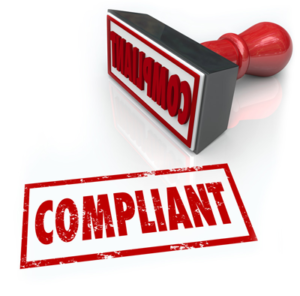5 Ways Providers Use Incentive Plans to Improve Performance
Incentive plans can help an agency boost its performance and improve quality of care by motivating employees and managers to increase their efforts toward achieving agency goals. For example, if any agency wants to maximize client care authorizations, it may offer employees a bonus if they are able to reduce their non-billable hours.
In order for an incentive plan to work, the provider must have measurable, self-financing plans that deliver major, identifiable benefits to the agency. The defined goals should be achievable for at least half of your workforce. Such goals might include:
- Staff-wide behavior changes
- Greater accountability
- Overtime reductions
- Increased billing and productivity
Providers across the country have achieved these objectives (and many more) from their incentive plans. The following examples of incentive plan models are based on real experiences.
Objective 1: Control Overtime
 Overtime costs in group homes and HCBS programs have been rising in recent years due to the labor shortage. While you may never eliminate overtime completely, an incentive plan can help you reduce it. Overtime control plans provide a continual reminder that minimizing overtime is always important and shares the savings with those who did the most to make a difference.
Overtime costs in group homes and HCBS programs have been rising in recent years due to the labor shortage. While you may never eliminate overtime completely, an incentive plan can help you reduce it. Overtime control plans provide a continual reminder that minimizing overtime is always important and shares the savings with those who did the most to make a difference.
To measure your progress, it is important to have a time & attendance system that provides detailed overtime reports. Also, managers should use a scheduling solution that can highlight available employees already in or approaching overtime.
To control overtime through an incentive plan, follow these steps:
- Measure the average level of overtime in all locations (including pay periods with holidays when overtime is usually higher).
- Decide on a goal, such as reducing overtime by 5 percent.
- After implementing the plan, calculate the total payroll savings from the reduced overtime levels (don’t forget to deduct any additional software costs acquired to implement this plan).
- Re-distribute a portion of the payroll savings to the managers whose locations had the least amount of overtime.
Objective 2: Increase Revenue
 Many HCBS programs involve authorizations and budget caps. But some providers may fail to maximize the authorization or, even worse, exceed the authorization. An incentive plan focused on increasing revenue, with the help of integrated time & attendance and scheduling solutions, will encourage managers and staff to maximize authorizations without exceeding them.
Many HCBS programs involve authorizations and budget caps. But some providers may fail to maximize the authorization or, even worse, exceed the authorization. An incentive plan focused on increasing revenue, with the help of integrated time & attendance and scheduling solutions, will encourage managers and staff to maximize authorizations without exceeding them.
To increase revenue through an incentive plan, follow these steps:
- Divide each authorization into manageable periods, like weeks or months. During each period, track the percentage of authorizations that are under-served or over-served.
- Be sure to compare scheduled hours and actual service hours to the authorization. Any goals achieved by unscheduled overtime should be ineligible for reward.
- Give a portion of the extra/saved revenue back to the managers with the least under/overruns.
Objective 3: Increase Productivity

Staff who work in HCBS programs often need to travel between clients. Since travel time is non-billable, providers need to keep it to a minimum. To do this, providers use smart scheduling solutions to map out shifts for minimum travel time and an automated time & attendance solution to track billable vs. non-billable hours. But sometimes, a little incentive can help managers use these tools more effectively.
For example, a provider in New York noticed that staff were spending a lot of time on non-billable travel around Long Island. So the agency promised a bonus to managers who could reduce travel time by adjusting schedules and routes. The plan worked. Through simple schedule changes and route-mapping, the agency significantly reduced non-billable travel time.
To increase productivity through an incentive plan, follow these steps:
- Track billable vs. non-billable hours for a month. This is your baseline.
- Ask managers to try reducing non-billable hours through scheduling and route-mapping. Track their progress for another month.
- Give a portion of the savings back to the managers who reduced non-billable hours by the highest percentage.
Objective 4: Strengthen Time & Attendance Compliance
 Reliable attendance is crucial for agencies, especially when one employee’s tardiness turns into another’s overtime. While employees may occasionally forget to clock in or out, 95% of an organization’s attendance records should be correct. An incentive plan encourages prompt attendance and reduces the risk of fraud.
Reliable attendance is crucial for agencies, especially when one employee’s tardiness turns into another’s overtime. While employees may occasionally forget to clock in or out, 95% of an organization’s attendance records should be correct. An incentive plan encourages prompt attendance and reduces the risk of fraud.
To strengthen time & attendance compliance through an inventive plan, offer bonuses, gift cards, staff lunches, or other special recognition to employees with perfect attendance in a given period (no missed punches, no edits, no late arrivals or early departures). Even better, if you reward employees in groups (i.e. the entire group home staff must have perfect attendance to receive a bonus) they will encourage each other to be on time.
Objective 5: Hire and Retain Qualified Staff
 One of the best sources for recruiting is an agency’s own staff. Employees often know of others in the same field who might be interested in a new opportunity, and they can speak to their character. Incentive plans can motivate them to reach out to their network and guide them toward agency job openings.
One of the best sources for recruiting is an agency’s own staff. Employees often know of others in the same field who might be interested in a new opportunity, and they can speak to their character. Incentive plans can motivate them to reach out to their network and guide them toward agency job openings.
To hire and retain qualified staff through an incentive plan, offer referral bonuses, track retention by manager, and reward managers who have the highest retention rates over a quarter.
Summary
Performance incentives are designed to influence behavior and result in positive gains for the agency. When implemented correctly, incentive plans can bring measurable improvements to consumer care, like reliable attendance, long-term relationships with faithful employees, and fully-utilized authorizations.
However, an organization needs effective tracking methods to implement an incentive program. If you would like to learn how your organization can reliably track time & attendance compliance, overtime by individual/group, client authorization utilization, billable vs. non-billable hours, and more, reach out to info@mitcsoftware.com.

 2018 MITC
2018 MITC